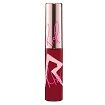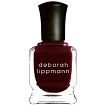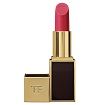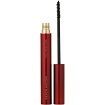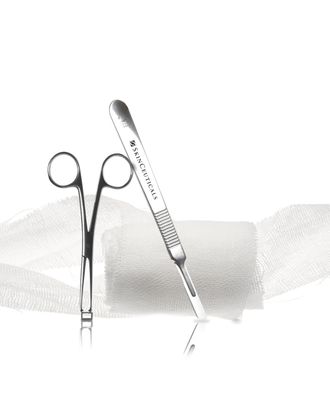
According to common beauty lore, Elizabeth Taylor, Marilyn Monroe, and Cleopatra all shaved their faces. A quick search online reveals that many modern women do, too, and you can now add me to that list. I’ve done it twice — once DIY and once professionally. And I’ll probably do it again.
Technically, I underwent dermaplaning — a fancy name for running a sharp blade over your face — which initially horrified me. Dr. Elizabeth Hale, a dermatologist at the Laser and Skin Surgery Center of New York, assuaged my fears. The procedure has been around for decades (or centuries, if you believe the Cleopatra myth), and has quite a few benefits, and not many bad side effects. The most obvious obstacle is getting over your fears about the old shaving myth: that the more you do it, the thicker your hair grows back.
“Dermaplaning is just a very simple physical or mechanical method of exfoliation, which helps to remove dead skin cells and give your face a brighter complexion,” Dr. Hale told me. “And since it removes some vellus hairs [the baby-fine hairs on your face], it can make the skin feel smoother. But I think it also taps into this whole new field in dermatology which is all about increasing efficacy and penetration of topical ingredients.” Your skin’s job is to keep foreign substances out, and that includes your pricey La Mer. Exfoliation, laser treatments, and even sticking dozens of tiny needles into your face can all theoretically help products absorb better.
Skinceuticals, a skin-care brand that works closely with dermatologists, has been offering a procedure through physicians’ offices called the Pigment Balancing Peel for the last few years, and it includes dermaplaning. I went to Dr. Haideh Hirmand’s office on Park Avenue for the procedure, which involved getting scraped and having acid smeared all over my face, with the goal of a more even complexion.
Gail Belott, who’s a registered nurse and a Clinical Trainer for Skinceuticals, first talked me through it all via phone. Historically, doctors and aestheticians performed dermaplaning with a surgical No. 10 blade, which is a blade that’s about an inch long and curves into a sharp point. Many offices still use this kind of blade, but for the purposes of dermaplaning, the sharp tip is unnecessary and even dangerous, so Skinceuticals developed a specific tool. The disposable blade, which attaches to a handle, is a little shorter than an inch, and Belott kept assuring me that it was “just like a butter knife.”
A practitioner holds this “butter knife” — which the TSA would never allow on a flight — at a 45-degree angle to your dry face, then scrapes in small, quick downward swipes over the parts of the face targeted for exfoliation. Many spas and offices stop there, but my procedure included an alpha-hydroxy acid peel right after the dermaplaning to maximize the exfoliating benefits.
According to Belott, there’s been renewed interest in dermaplaning over the last few years because of the Real Housewives. Alex McCord once mentioned it on the show a few years ago and it experienced a resurgence.
After making sure Elizabeth, the nurse who performs all the dermaplaning in Dr. Hirmand’s office, wasn’t a coffee addict (jitters, you know), I put my face into her capable hands. She cleansed my face, put a clay mask on my breaking-out chin (you can’t dermaplane on skin where you have acne), added some toner, then started scraping my forehead and cheeks, which we agreed were my dry areas. I’m pretty sure I was clenching the sides of the chair, which was tilted back, dentist style, for the first few passes.
The scraping sounded exactly the way you would expect a blade on dry skin to sound. But it didn’t hurt at all. And the end result is pretty spectacular on two levels. First of all, if you are a skin picker, popper, or peeler, you should definitely ask to see the little pile of gunk that comes off with the blade. It’s quite satisfying. Second, when I touched my forehead immediately after the scraping was done, I could not believe how soft it was. I was probably shopping for prom dresses the last time my skin felt that silky.
Elizabeth applied the acid peel next, and that was a lot less comfortable than the dermaplaning. She said, “We call the sensation ‘stingling.’ Let me know if it turns into burning.” The stingling was fairly intense, but I sat there for the required two minutes. (If you do a peel without dermaplaning, you have to sit with it on for five minutes. I’m not sure I could have made it.) A relaxing cooling and hydrating mask followed, and then I was sent on my way. Two days later, my face flaked from the peel, but by day three I had noticeably more glowy, soft skin. I’m a convert.
So first and foremost, dermaplaning is a great exfoliator. The side effect — or added bonus, depending on how hairy you are — is that it also hacks off all your fine facial hairs, which makes your skin look even smoother and helps makeup go on more easily. Until I started investigating dermaplaning, I didn’t even realize I had some blonde peach fuzz on my face. Now it’s all I notice. It’s not like slacking off on bikini waxing, which only a select few people in my life would ever be privy to. I’m pretty sure everyone now notices my beard.
Before I went for professional dermaplaning, I researched the DIY version first, which many women do for hair removal, with exfoliation being the added benefit rather than the main draw. Fine hair is hard to remove by waxing, and if you’re blonde, your hair won’t respond well to laser hair removal. Since No. 10 surgical blades are hard to come by, I turned to YouTube to point me in the direction of the best at-home alternative.
It turns out that the foremost expert in lady face shaving happens to be another reality-TV star, Michelle Money, who was on The Bachelor season fifteen and is now a beauty vlogger under the handle MMandLShow. Her video on shaving from two years ago appears to be the seminal work on the topic, because subsequent bloggers cite it frequently. It’s painful to watch, yet admittedly educational.
Money warns that you should never use a standard Gillette for shaving your face. Instead, look for a facial razor or eyebrow razor. After hunting around, the two best brands seem to be Shiseido and Tinkle razors. They have a sharp, notched edge, and they’re meant to be used dry, as opposed to a standard razor, which requires shaving cream. I happened to have a few Sally Hansen versions of these lying around at home (FYI, they’re good for bikini-line maintenance, too), so I tried a new one on my face.
I washed up and then scraped my entire face pretty thoroughly, until all the peach fuzz was gone. I put my favorite serum all over and enjoyed my smooth skin for about two few weeks. In hindsight, it wasn’t quite as smooth as the professional version, but that one also included a peel, so they probably can’t be directly compared.
And what about the old wives’ tale that hair grows back thicker after you shave? Obviously that’s a concern when you’re a woman thinking about taking a blade to your face. “It’s a common misconception that hair will grow in darker and coarser. Shaving does nothing to increase the density or quality of the hair,” Dr. Hale told me. “And with vellus hairs, you can’t do anything to change them. By nature they’re soft and fine, and shaving them won’t make them thicker and coarser.” Phew.
I didn’t believe Money when she said the type of blade you use matters, because shaving is shaving, right? I’m going to now admit that just for the purposes of experimentation, I lathered some face wash onto my face and took my Venus to a small portion of my chin, just to see what would happen. Smooth! Luckily it grew back in just as peach-fuzzy as before, so I won’t be mistaken for an extra on Duck Dynasty. The eyebrow-razor version was actually quicker and more convenient, and made me feel less like a deviant than using a standard razor did, so if you’re in the market, I’d stick with that kind.
The take-home message here is that you should figure out what your skin needs. If you just want good exfoliation, you don’t necessarily need to dermaplane. “I don’t really have anything against this procedure but I don’t want to extoll its virtues either because there’s nothing magical,” Dr. Hale told me. “I would recommend finding a good skin routine with your dermatologist, including, possibly, hydroxy acids, retinoids, or laser.” However, if you’re a little hairy and also want to get rid of dead skin cells, the razor may be your best bet. If you choose to do it professionally, definitely make sure you go to someone qualified — and a stint on reality TV doesn’t count.


